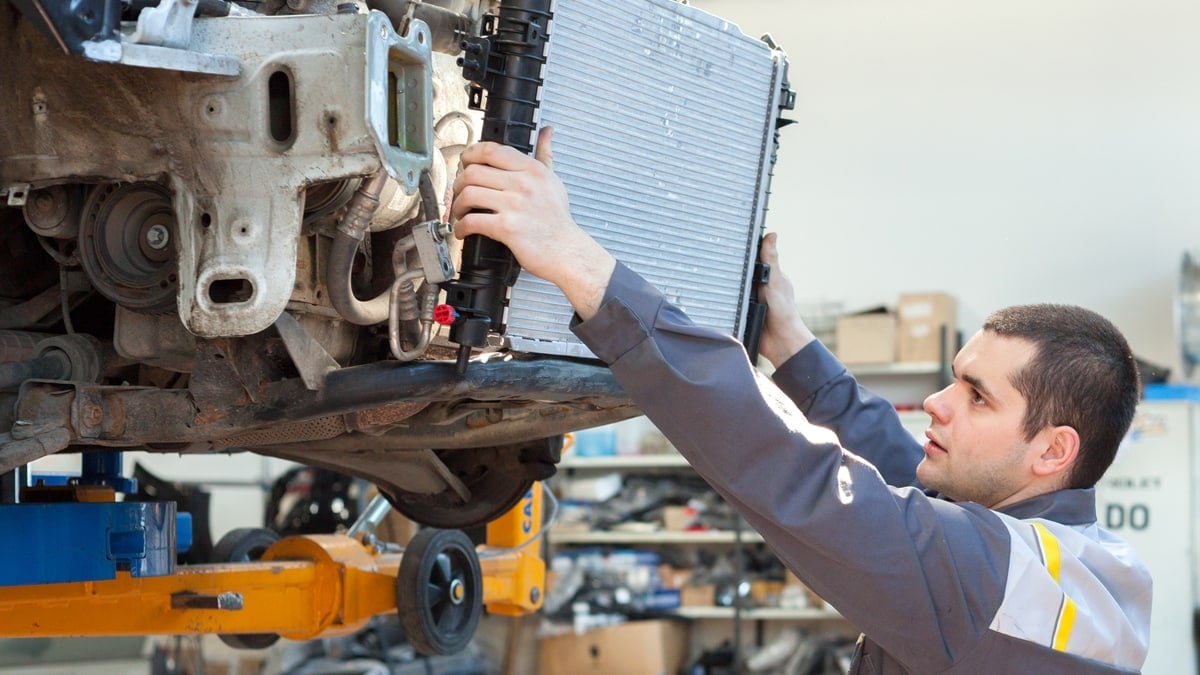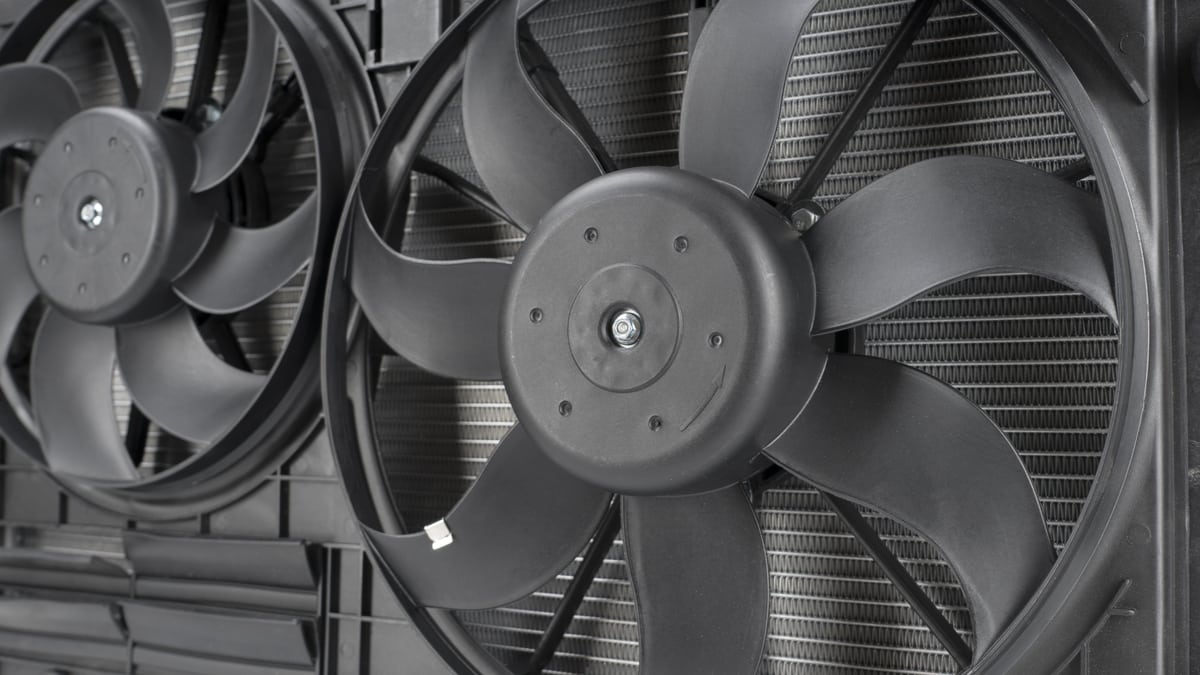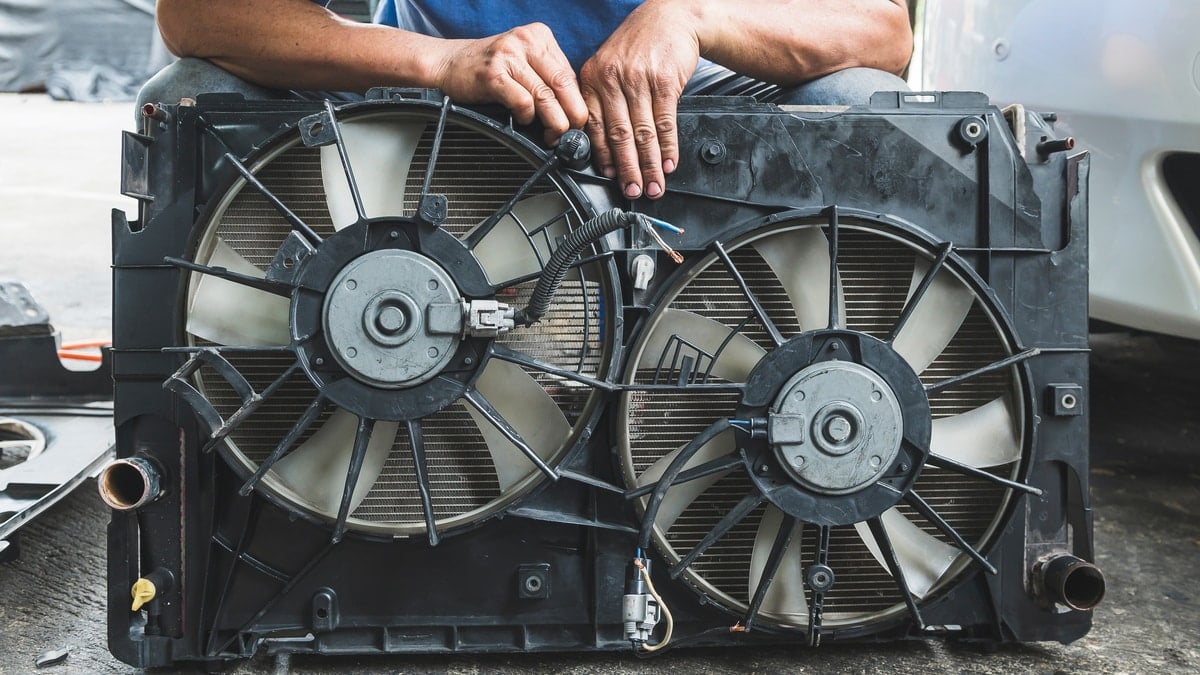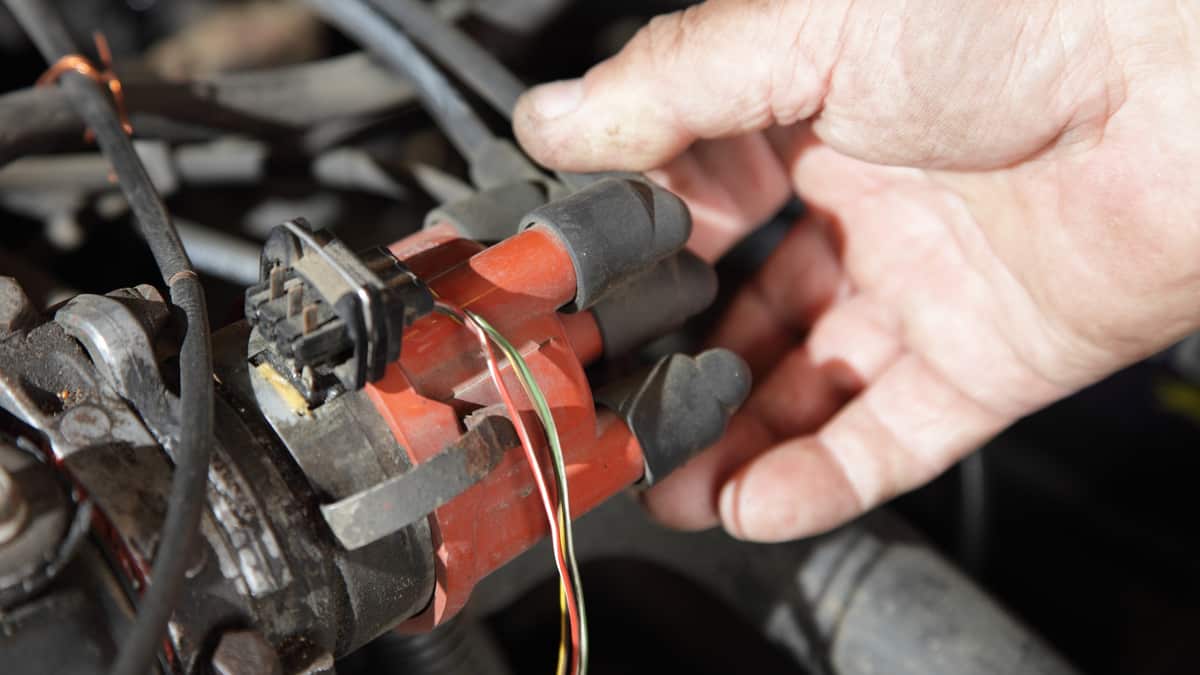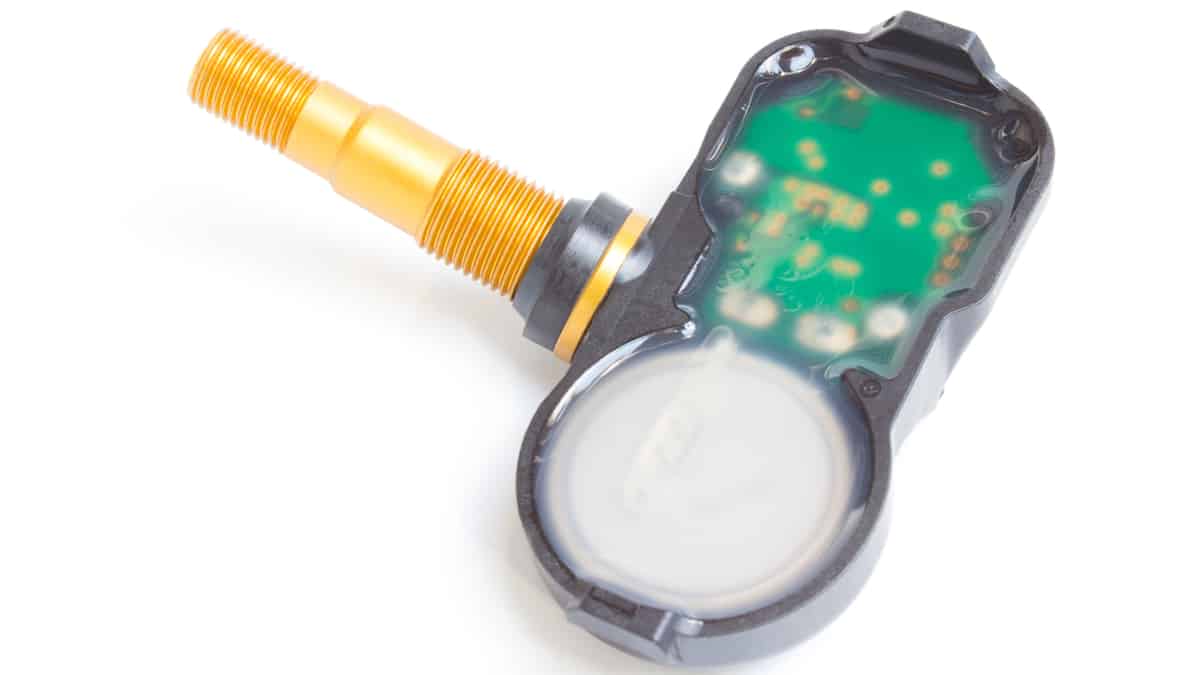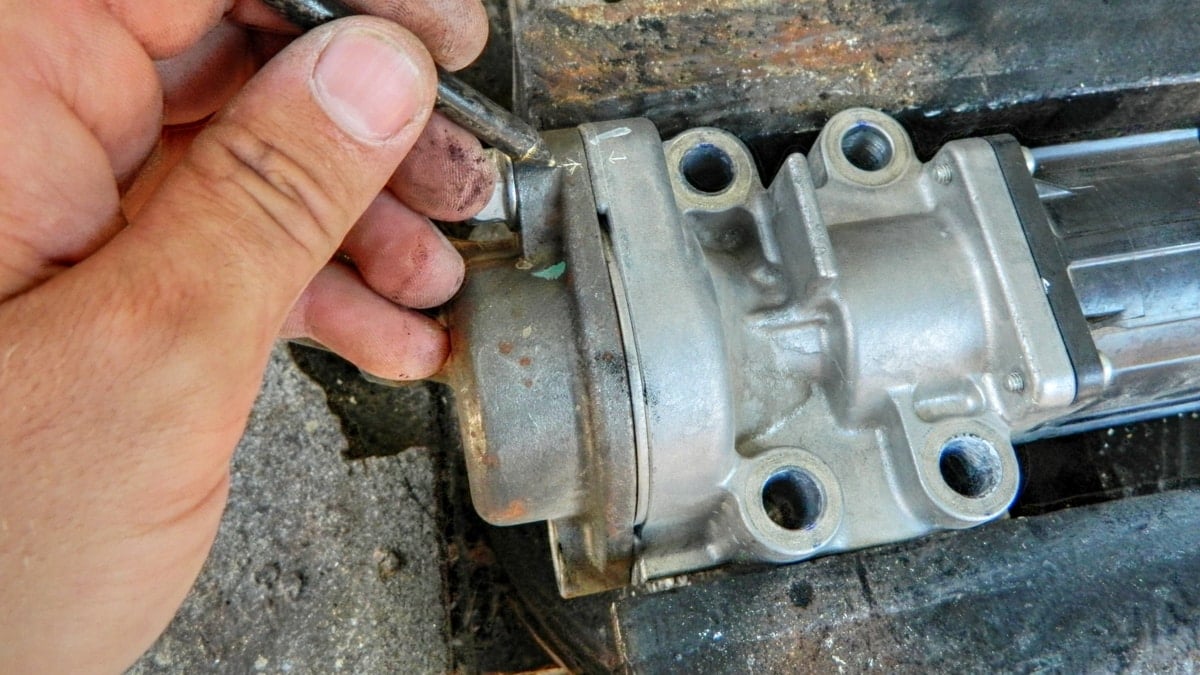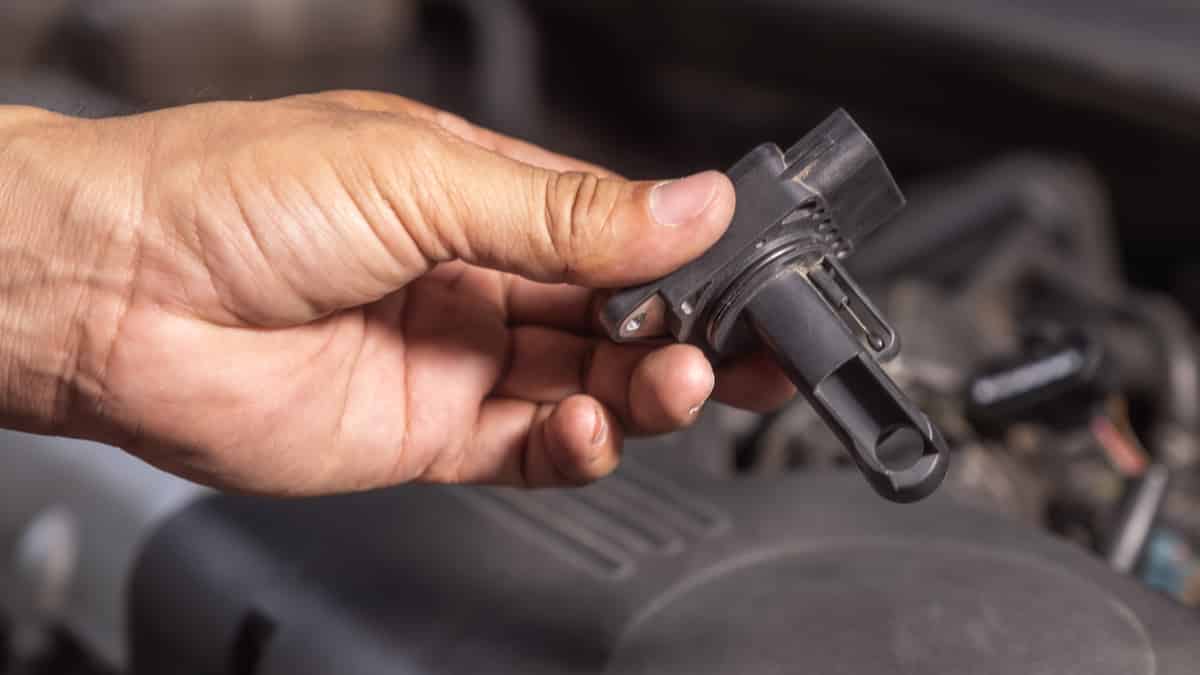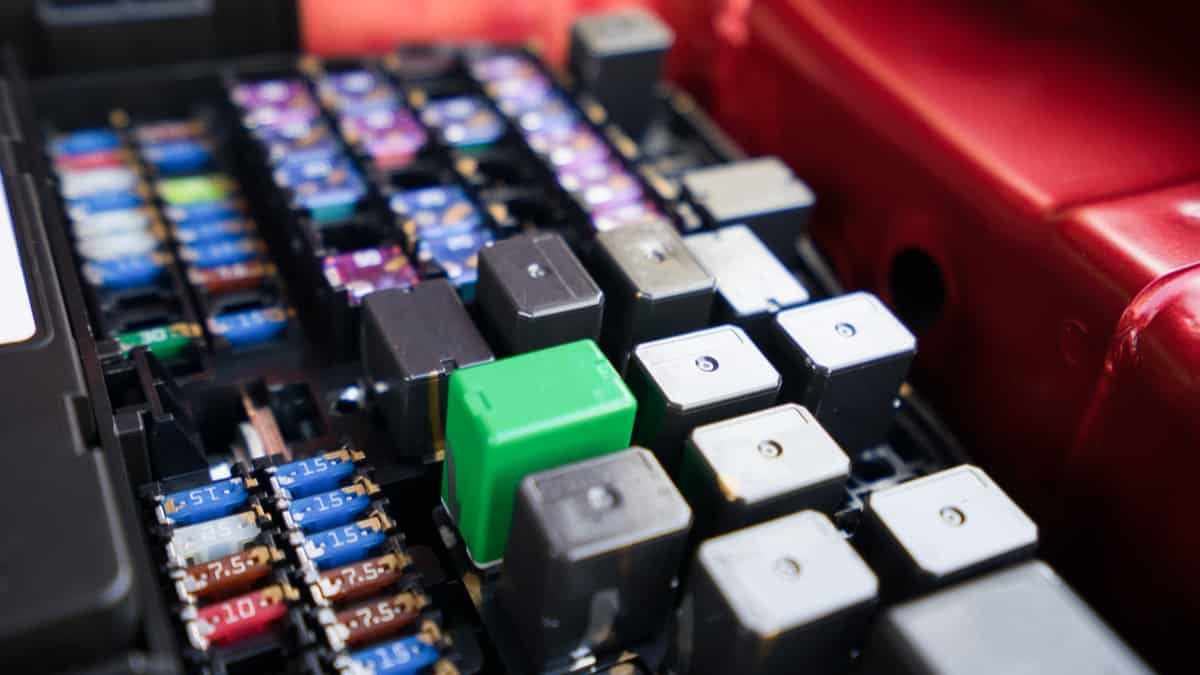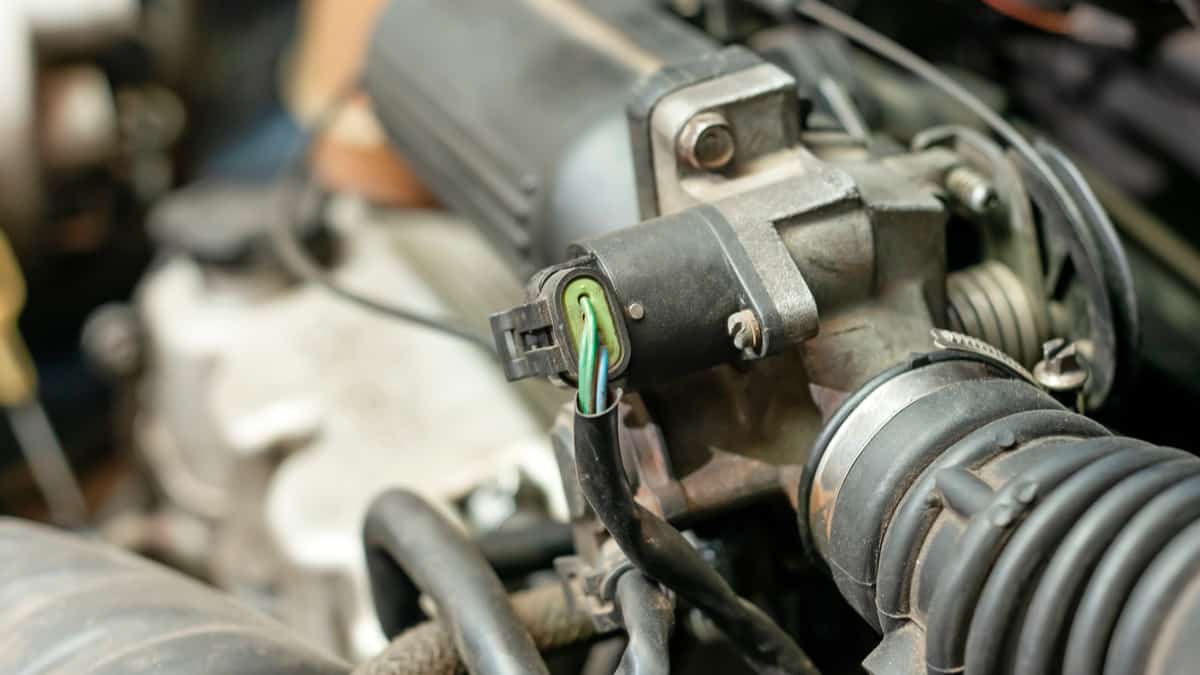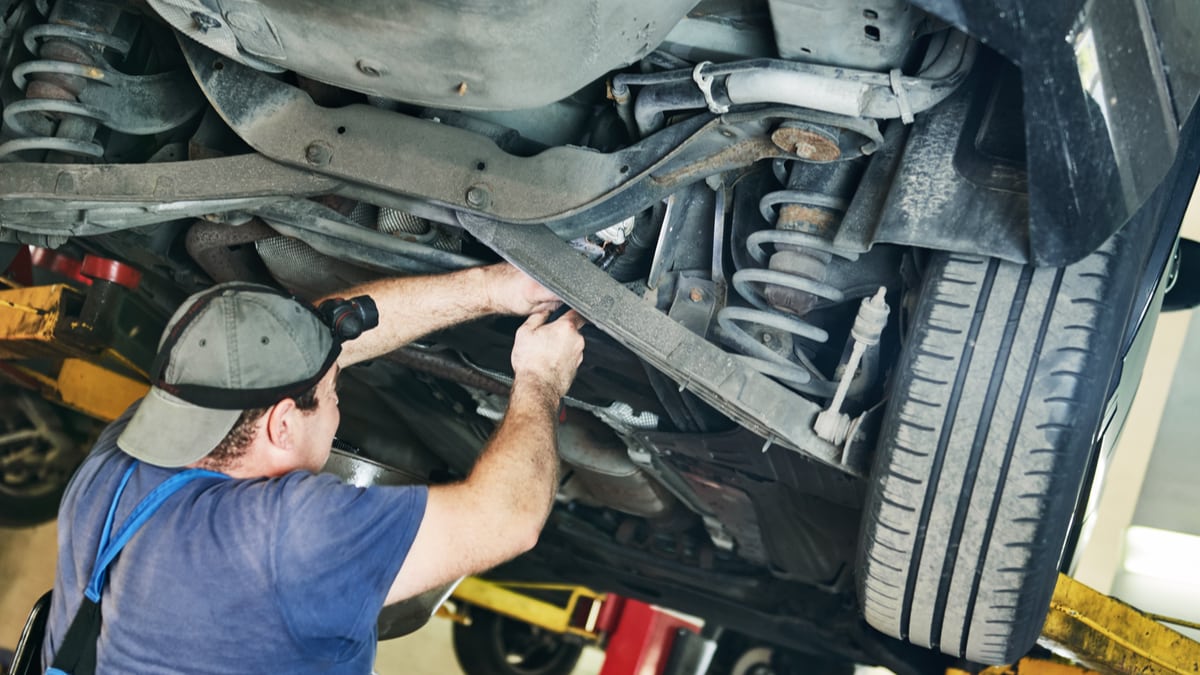Your vehicle needs coolant to run and not overheat. An overheating engine shuts off and can lead to irreversible damage, which is the last thing you want. While the entire cooling system consists of many different components, one of the most integral is the radiator cap.
It’s one of the most critical parts of your cooling system, but unless you’re having problems, it’s one you’ve probably never thought of.
But what does the radiator cap do, and how do you know when you need to replace it? I’ll break down everything you need to know here. Let’s begin with a look at the signs.
Symptoms Of A Bad Radiator Cap
The most common symptom of a bad radiator cap is coolant leaks under the radiator. You may also notice dried white streaks on the radiator coming from the cap. If your coolant is low, that can be a sign that the radiator cap is bad.
Here is a more detailed list of the signs of a bad or failing radiator cap to look for:
1. Leaking Coolant
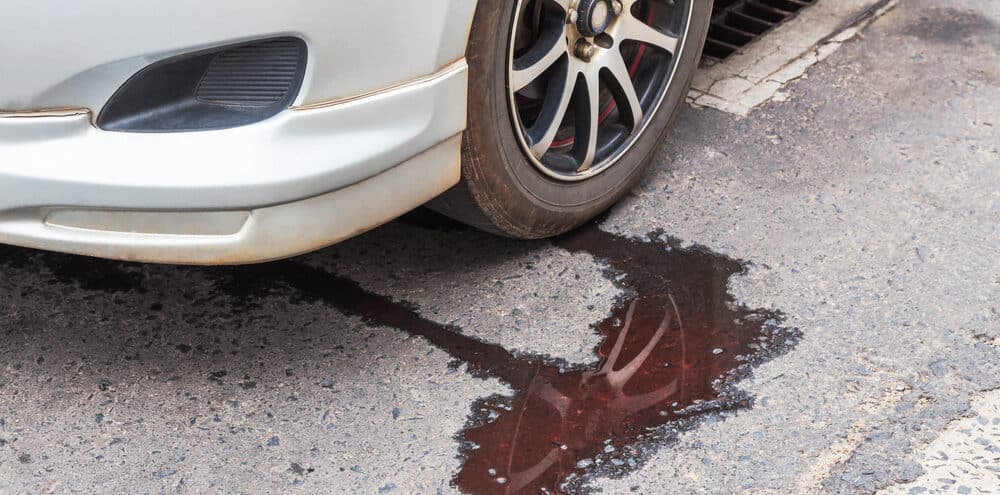
The most obvious sign that something bad is going on is coolant pooling underneath your vehicle. Your vehicle’s cooling system is a sealed system, which means everything that goes in is supposed to stay in.
If your vehicle has a coolant leak, you need to investigate further, and the problem might come down to your radiator cap.
2. White Streak on Radiator
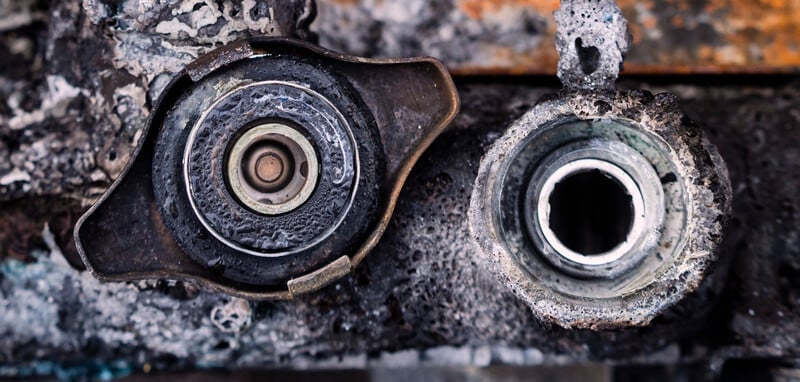
Just because coolant is leaking from your radiator cap doesn’t mean it’s making it to the ground. The radiator cap is at the radiator’s top, and if the leak isn’t bad enough, the coolant might burn off the radiator before it starts to drip off the bottom.
If that happens, there will be white streaks left on the radiator where the coolant burned off.
3. Low Coolant
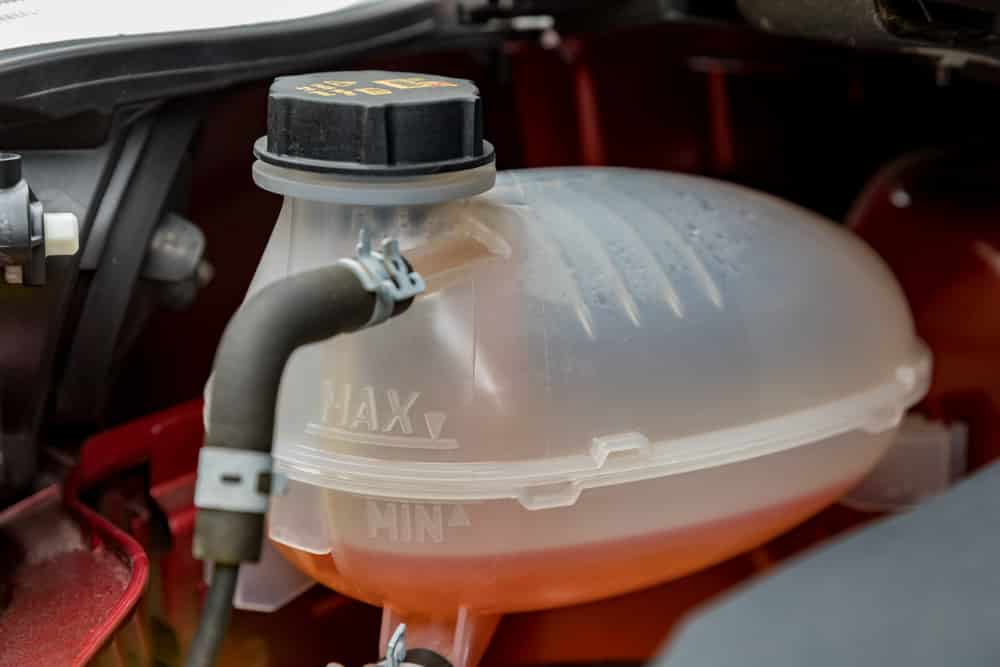
Your vehicle has a sealed cooling system, so if you had enough coolant one day, you should have enough the next. If you find that you keep adding coolant, that means your engine is either burning or leaking coolant.
It’s going somewhere! If you consistently have low coolant, take a look at your radiator cap to see if that’s where it’s escaping from.
4. Overflowing Reservoir
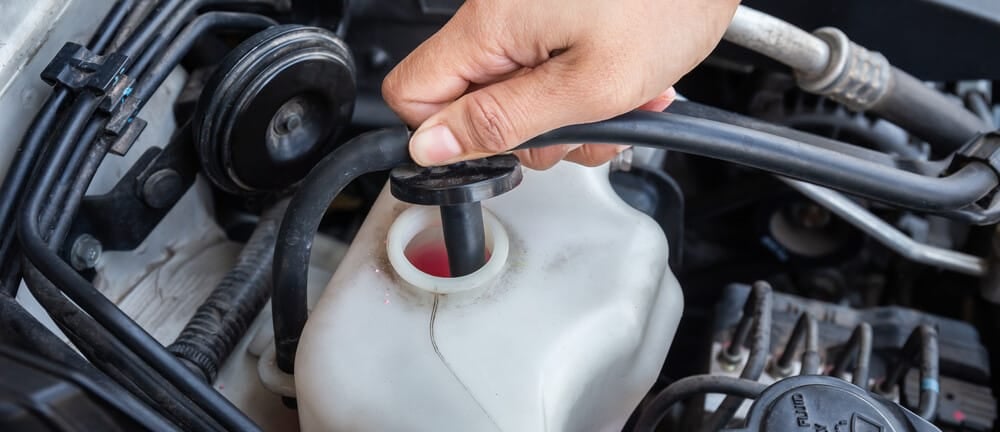
Once the coolant reaches a specific temperature, it generates enough pressure to open up the radiator cap pressure valve, which sends the coolant back to the reservoir. But if the radiator cap isn’t working correctly, it can send too much fluid back to the reservoir, sending coolant out of the overflow hose.
Related:
How a Radiator Coolant Overflow Tank Works
6 Causes of Oil in Coolant Reservoir & What to do
5. Overheating Engine
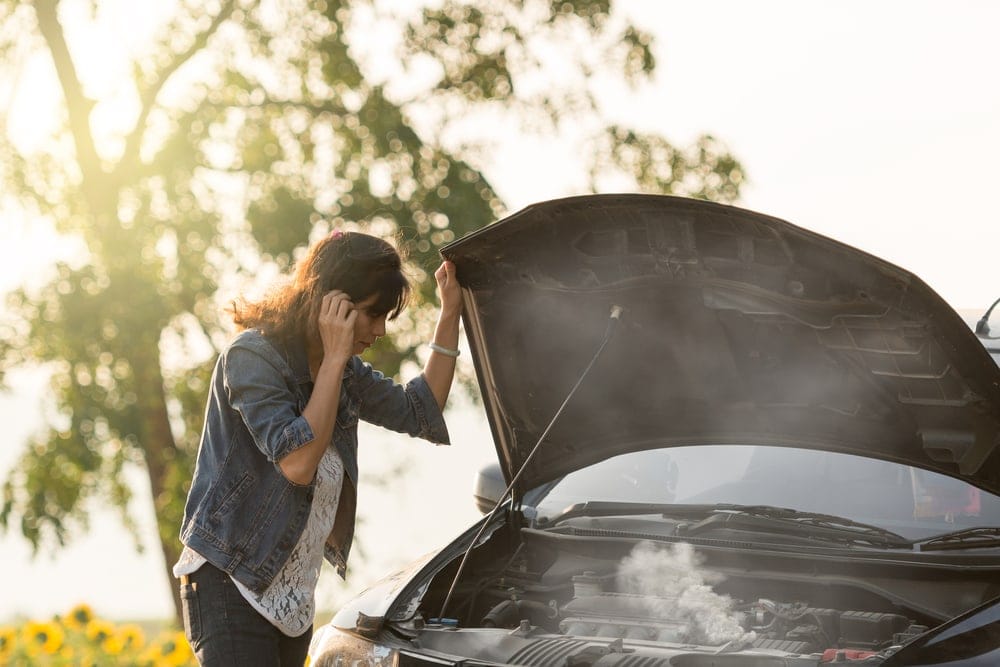
Your radiator cap does a few different things to keep your engine at the correct temperature. While I’ll get more into how it works later in the article, just know that a bad radiator cap can lead to an overheating engine!
6. Steaming Engine/Radiator Cap

When everything is working correctly, the radiator cap does a great job at pressuring the system to raise the coolant’s boiling point. But if you have a faulty radiator cap, the coolant won’t reach the right temperature, and it can start to boil.
The result will be a lot of steam coming from your engine or your radiator cap as the coolant boils out of the system.
The function of the Radiator Cap
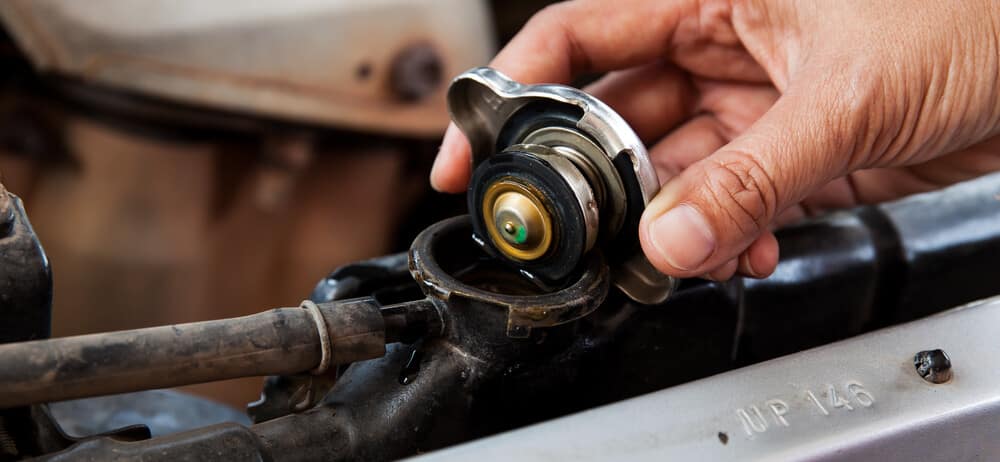
The radiator cap might be the most overlooked component in your vehicle’s cooling system, but it might be the most impressive. There are four functions of the radiator cap, and if any one of them isn’t working correctly, you’ll run into problems. Those functions are:
- To pressurize the cooling system
- Relives excess pressure to the reservoir
- Seals the cooling system
- Directs coolant to the radiator through a vacuum valve
For starters, your radiator cap pressurizes the system. This pressure raises the boiling point of the coolant. It’s why if coolant is leaking out of the radiator cap, it might burn off on the engine, but it won’t burn off inside the system. Without a pressurized system, the coolant will start to boil, and your engine won’t be able to cool down effectively.
Second, while some pressure is good, too much is detrimental. Excess pressure can blow up hoses, the cap itself, and any other weak points in the system. The radiator cap has a set point where it opens up to send the excess pressure to the reservoir, which has an open excess coolant hose to relieve the pressure safely.
Third, the radiator cap seals the system. It’s pretty straightforward; when you take the cap off, you can add coolant directly to the radiator, but you can’t have an opening with the engine running, or else you’ll introduce air to the system, which is detrimental.
Finally, when coolant starts to cool down, it contracts, which lowers the coolant level in the radiator. The radiator cap’s vacuum valve sends more coolant to the radiator to keep everything at the right level.
Related: 10 Best Engine Antifreeze & Coolants
Radiator Cap Location

While many people overlook the radiator cap, it’s typically easy to find. First, you need to locate the radiator, which is usually in the front of the engine bay.
The radiator cap is located on the top of the radiator – typically on the left or right side, but sometimes right in the middle of the radiator
Once you’ve located the radiator cap, you’ll need to press down on it and twist it to take it off. It’s essential to never take the radiator cap off of a hot engine! The system is pressurized, so as soon as you take off the cap, all that pressure has somewhere to escape.
Not only will you lose a ton of coolant as it shoots out of the radiator cap opening, but it’s also going to be scalding hot.
Radiator Cap Replacement Cost
The average radiator cap replacement cost is between $10 and $50, depending on the car model. A new radiator cap costs between $5 and $25, while labor only takes 10 seconds and is often free.
The good news is that if you have a faulty radiator cap, it’s one of the cheapest possible components to replace.
Even better is that it’s extremely easy to replace. Labor costs can vary depending on if the mechanic you take it to has a set minimum rate for all jobs, but I highly recommend just replacing it yourself, since it’s so easy.
All you need to do is locate the radiator cap and push down and twist it counterclockwise to take it off. Just be sure that the engine is completely cool before doing this! You need to let your vehicle sit for at least 12 hours before removing the radiator cap.
From there, all you need to do is twist the new radiator cap on clockwise to finish the job! It’s easy to do, and it can save you a few bucks at the repair shop.
Categories: Coolant

